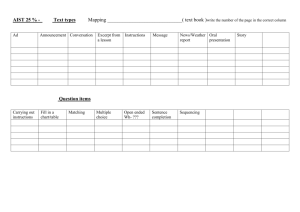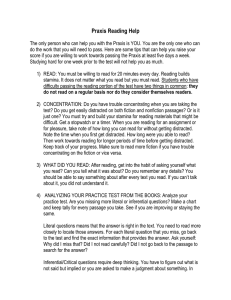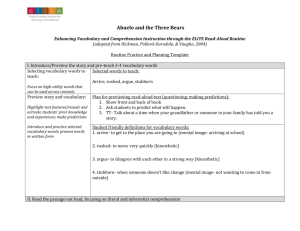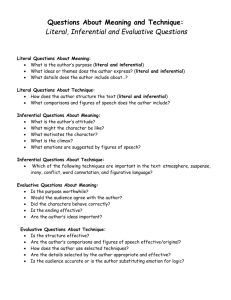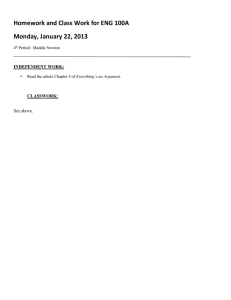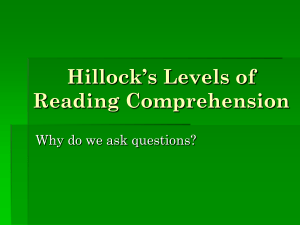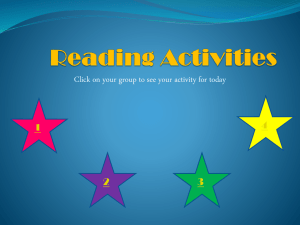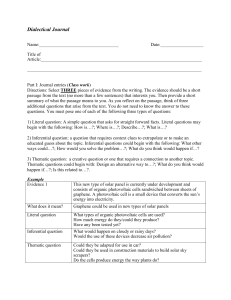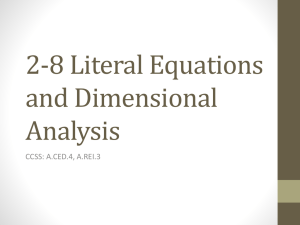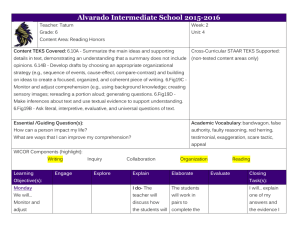Close Reading: Learning to Live with it?
advertisement
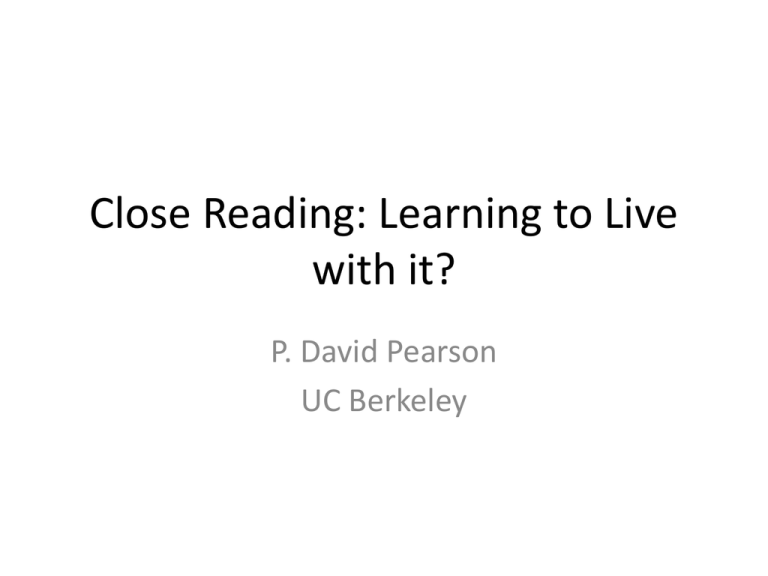
Close Reading: Learning to Live with it? P. David Pearson UC Berkeley Goals • Get clear on what close reading is really about. • Disabuse ourselves of the idea that close reading = literal comprehension • Champion the idea that close reading is interrogating the text for specific purposes • Work through some examples… Toward Some Enduring Understandings • Why would we ever want to read closely? • What do we mean by it? • Does it vary according to – Genre – Discipline – Purpose of the reading Historically… • Close reading was a reaction to the historicism and psychoanalytic traditions of the 20s in literary theory. – Knowing what Keats had for breakfast won’t help you understand Ode to a Grecian Urn • New Criticism: I. A. Richards, William Empson, Brooks and Warren: a rigorous objective method for extracting the correct meaning of a text. – (what does the text say?) Close Reading in Reader Response: • read through the text to its connections with the reader, other books, history. (what does the text mean?) – Rosenblatt: close reading to transform the meaning of a text according to each reader’s experience – Fish: transform the meaning of a text according to norms of a particular interpretive community Close Reading in Critical Literacy • Read through the text to its ideological underpinnings – (what does the text do?) • Derrida: read closely to uncover a text’s different, often contradictory, meanings because words refer only to conceptual systems of other words and not to fixed meanings or external reality • Get to the subtext… A debunking of the idea that the meaning is in the text: From one of the close reading heroes of the past: Mortimer Adler—How to read a book • And that is exactly what reading a book should be: a conversation between you and the author. Presumably he knows more about the subject than you do; naturally, you'll have the proper humility as you approach him. But don't let anybody tell you that a reader is supposed to be solely on the receiving end. Understanding is a two-way operation; learning doesn't consist in being an empty receptacle. The learner has to question himself and question the teacher. He even has to argue with the teacher, once he understands what the teacher is saying. And marking a book is literally an expression of differences, or agreements of opinion, with the author. Definitions of Close Reading • Mikics: To read closely is to investigate the specific strength of a literary work in as many details as possible. It also means understanding how a text works, how it creates its effects on the most minute level. • Bialostosky: Reading with a productive attentiveness to texts • Berthoff: attending to the interplay of saying and meaning Rand 2000 What the text says What the text means Reading Comprehension is the simultaneous extraction and construction of meaning in response to text. I am 100% committed to the CCSS • The 9 standards that define comprehension are worthy of support • But I take issue with some of the implementation schemes. Stay close to the text • Staying close to the text. “Materials make the text the focus of instruction by avoiding features that distract from the text. Teachers’ guides or students’ editions of curriculum materials should highlight the reading selections…Given the focus of the Common Core State Standards, publishers should be extremely sparing in offering activities that are not text based.” My concern • We will operationally define text dependent as literal, factual questions • Forgetting that LOTS of other questions/tasks are also textreliant • Compare literal – What were two reasons pioneers moved west? – What does the author believe about the causes of westward intepretive expansion in the United States? – How valid is the claim that author X writes from an ideology of critical manifest destiny? • YOU DON’T NEED A LITERAL FACTUAL QUESTION TO PROMOTE CLOSE READING… • Fundamental misunderstanding about reading theory: – Every action—critical, inferential, or literal—requires the use of prior knowledge to carry it out… Text before all else “The Common Core State Standards call for students to demonstrate a careful understanding of what they read before engaging their opinions, appraisals, or interpretations. Aligned materials should therefore require students to demonstrate that they have followed the details and logic of an author’s argument before they are asked to evaluate the thesis or compare the thesis to others.” (page 9) My concern • We will view literal comprehension as a prerequisite to inferential or critical comprehension. • Compare – We could read text X. Then read text Y. Then compare them on Z. – Or just ask them to conduct a comparative reading of X and Y on Z. • Sometimes the comparison or critique question better rationalizes the close reading So what about Prior Knowledge • Why has it taken a beating in the Publishers’ Criteria • One thought: Too much Indulgence at the trough of prior knowledge – Too much Know, not enough Want to Learn and Learn – Too much picture walk – Too much story swapping about our experiences with roadrunners before reading… • Let’s right the wrongs • Need a mid course correction not a pendulum swing – Knowledge in proper perspective? – Balanced view of knowledge? – Knowledge in the service of understanding • Embrace the virtuous cycle – Knowledge begets text comprehension begets knowledge… • From the CCSS: Students who meet the Standards readily undertake the close, attentive, reading that is at the heart of understanding and enjoying complex works of literature. They habitually perform the critical reading necessary to pick carefully through the staggering amount of information available today in print and digitally. They actively seek the wide, deep, and thoughtful engagement with high-quality literary and informational texts that builds knowledge, enlarges experience, and broadens world views. So what’s a body to do? • Embrace the construct of close reading but with BALANCE in mind… – But make sure that it applies to several purposes for reading • Reading to get the flow of ideas in the piece. • Reading to enhance our knowledge base!!!! • Reading to compare (with another text or body of experience or knowledge • Reading to critique – how good is the argument or the craft or – what is his bias/slant/perspective) • All of these approaches interrogate the text as an evidentiary base. More a body can do… • For the CCSS, Stay closer to the standards than to the interpretations of the standards we have seen thus far. • Enact a full model of close reading – Four Resources works for me – So does QAR – Just make sure to encompass literal, interpretive, and critical reading tasks • • • • I like NAEP’s framework: Locate and Recall Integrate and Intepret Critique and Evaluate – See Schoenbach, Greenleaf, and XXXX: Reading for Understanding My sure fire Close Reading Strategy • What do you think? • What makes you think so? • All about warranting claims about what the text says, means, or does... • From Mary Uboldi at Healdsburg High School Mr. Martin bought a pack of Camels on Monday night in the most crowded cigar store on Broadway. It was theatre time and seven or ten men were buying cigarettes. The clerk didn’t even glance at Mr. Martin, who put the pack in his overcoat pocket and went out. If any of the staff at F&S had seen him buy cigarettes, they would have been astonished, for it was generally known that Mr. Martin did not smoke, and never had. No one saw him. What you think you know What in the text makes you think so? Series of slides on close reading • 4 successive slides showing a short story with different close reading routines.
